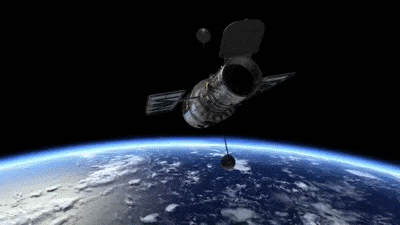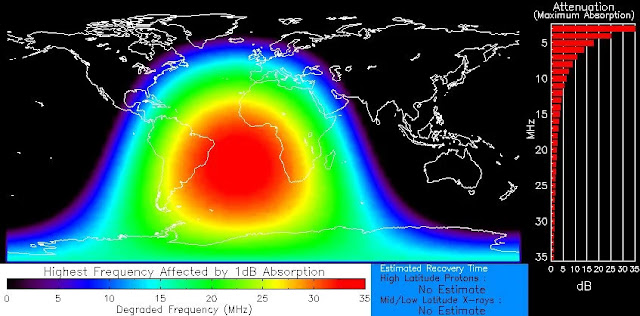NASA - STS-1 Mission patch.
July 10, 2021
On April 12, 1981, space shuttle Columbia launched for the first time with NASA astronauts John Young and Bob Crippen aboard.
With 10 years of design and development, the shuttle was the first of its kind — a reusable vehicle for travel to low-Earth orbit.
Space Shuttle’s 40th Anniversary - 'Something Just Short of a Miracle'
The STS-1 Mission would demonstrate safe launch into orbit and safe return of the orbiter and crew and verify the combined performance of the entire shuttle vehicle - orbiter, solid rocket boosters and external tank. Commander John Young called the flight “something just short of a miracle.”
The success of the STS-1 Mission was the beginning of an era and over the course of three decades, the space shuttle program redefined what we know about living in a microgravity environment.
Retired Astronaut Bob Crippen on the 40th Anniversary of STS-1 and the Beginning of the Shuttle Program
The Space Shuttle Columbia began a new era of human spaceflight when STS-1 lifted off from NASA's Kennedy Space Center in Florida on April 12, 1981, for the inaugural flight of the nation’s Space Shuttle Program. To mark the occasion, NASA is providing historical b-roll footage of the launch and landing as well as recently recorded soundbites from retired astronaut Bob Crippen.
Aboard the spacecraft were commander John W. Young and pilot Crippen. The flight was a test mission and the first time a shuttle was flown to space. Columbia lifted off at 7 a.m. from Launch Pad 39A and was NASA's first crewed mission since the Apollo-Soyuz Test Project in 1975. The launch occurred 20 years to the day after the first human launch when cosmonaut Yuri Gagarin orbited Earth in the Vostok 1 capsule on April 12, 1961. Columbia concluded STS-1 on April 14, 1981, with a touchdown at Edwards Air Force Base, California, after a 54-hour mission.
Image above: These two astronauts are the prime crewmen for the first flight in the Space Transportation System (STS-1) program. Astronauts John W. Young, left, commander, and Robert L. Crippen, pilot, manned the space shuttle orbiter 102 Columbia for the first orbital flight test on April 12, 1981. Image Credit: NASA.
The mission objective was to demonstrate the safe launch into orbit and safe return of the orbiter and crew. The mission also verified the combined performance of the entire shuttle vehicle, orbiter, solid rocket boosters, and external tank. Payloads included the Developmental Flight Instrumentation (DFI) and the Aerodynamic Coefficient Identifications Package (ACIP) pallet containing equipment for recording temperatures, pressures, and acceleration levels at various points on the spacecraft.
Between the first launch in 1981 and the final landing on July 21, 2011, NASA's space shuttle fleet – Columbia, Challenger, Discovery, Atlantis, and Endeavour – flew 135 missions, helped construct the International Space Station, and inspired generations.
Image above: The Space Shuttle Columbia began a new era of human spaceflight when STS-1 lifted off from NASA's Kennedy Space Center in Florida on April 12, 1981. Image Credit: NASA.
As humanity's first reusable spacecraft, the space shuttle pushed the bounds of discovery ever farther, requiring not only advanced technologies but the tremendous effort of a vast workforce.
Crippen spoke via computer for a recent episode of NASA’s Rocket Ranch podcast. During the interview, Crippen discusses his experience as STS-1 pilot, the spacecraft’s historic launch and landing, the discovery of missing heat tiles during the mission, and the shuttle program legacy. Soundbites from that interview, along with historical photos and b-roll footage, can be found on NASA image site using the links below.
Add-on for Flight Simulator X (FSX):
Space Shuttle Columbia Tribute for FSX
Image above: Space Shuttle Columbia Tribute for FSX made by Orbiter.ch Aerospace / Roland Berga.
Available for free on https://simulators.jimdo.com/
STS-1 footage:
https://images.nasa.gov/details-KSC-20210325-MH-JRS01_0001-STS-1_File_Footage_for_40th_Anniversary
Bob Crippen Interview:
https://images.nasa.gov/details-KSC-20210325-MH-JRS01_0001-Bob_Crippen_Interview_on_STS-1_Soundbites
Related links:
Space Shuttle: https://www.nasa.gov/mission_pages/shuttle/main/index.html
Kennedy Space Center (KSC): https://www.nasa.gov/centers/kennedy/home/index.html
Images (mentioned), Videos, Text, Credits: NASA/Danielle Sempsrott/KSC/Patti Bielling/Laura Aguiar/Orbiter.ch Aerospace/Roland Berga.
Best regards, Orbiter.ch














































